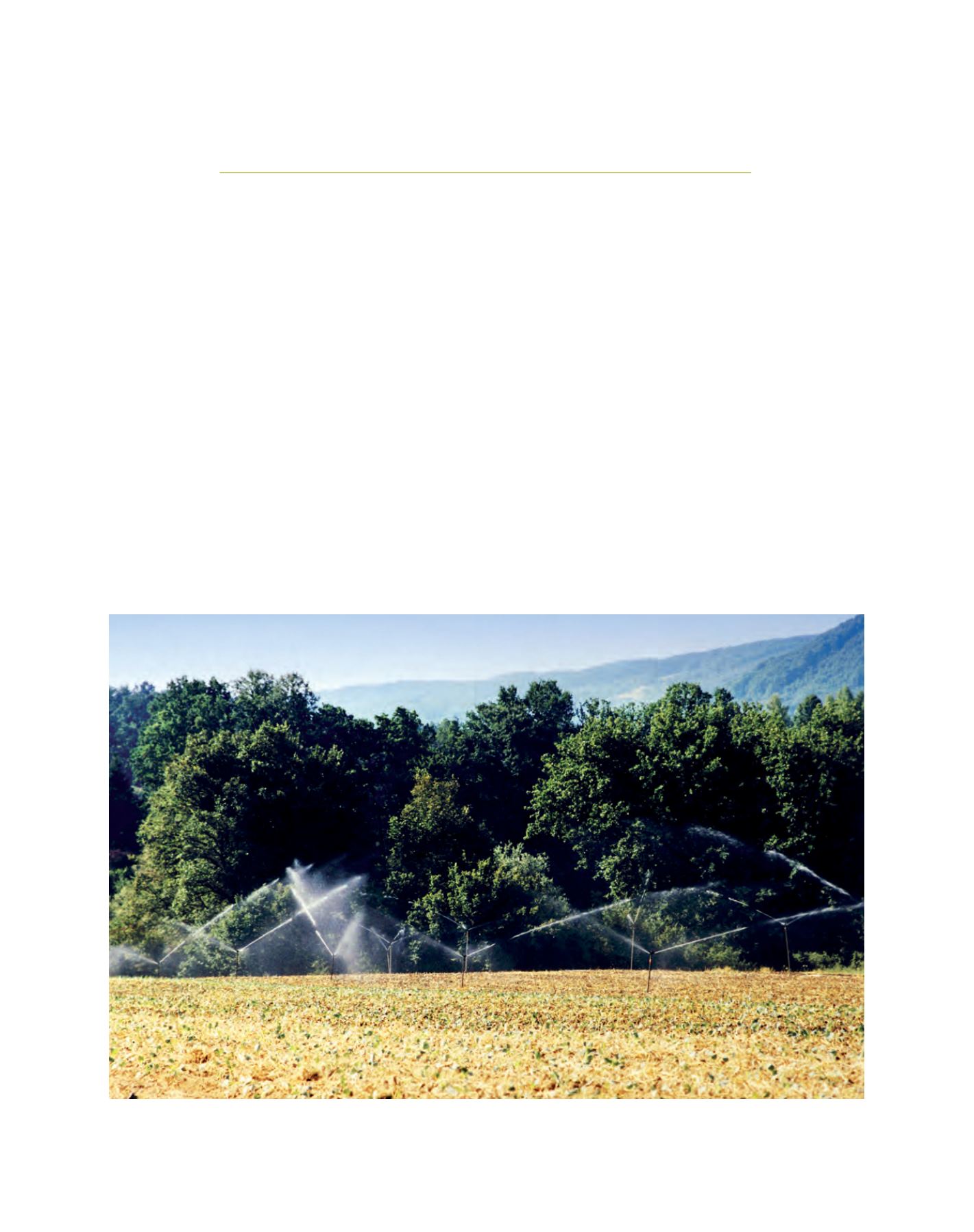

[
] 215
Coping with drought in Slovenia
Drought Management Centre for Southeastern Europe
D
rought is a normal, recurrent feature of climate. It occurs
in virtually all climatic zones, although its characteristics
vary from region to region. One way inwhich drought differs
from other natural disasters is that it is difficult to ascertain onset
and duration because consequences accumulate slowly and over a
long period of time. However, drought phenomenon receives close
attention due to its impact on both economy and society.
Slovenia is situated in a region with favourable climate and rich water
resources. Agriculture, which is the sector most vulnerable to the
impact of drought, contributes only a few per cent of gross domestic
product. This is the ‘big picture’, but problems appear when one looks
at the details. Agriculture does not contribute a lot to the economy
from a financial perspective, but it keeps the countryside populated
and prevents migration to the cities. It supplies a basic income to many
socially underprivileged people, whilst also providing business and
job opportunities to more inventive farmers. Regardless of their back-
ground, farmers are among those that are most exposed to
unfavourable weather, including drought.
Many characteristics of drought occurrence in
Slovenia are shared with neighbouring countries in
the region. Southeastern Europe comprises Albania,
Bosnia and Herzegovina, Bulgaria, Croatia, the Former
Yugoslav Republic of Macedonia, Greece, Hungary,
Montenegro, Moldova, Romania, Serbia, Slovenia and
Turkey. Frequent occurrences of drought impacts
reveal areas where natural resources are probably not
managed in a sustainable manner – at least not in the
warm season. Southeastern Europe is not affected as
severely as some parts of the world, but there is a long
history of drought in the region, and these events will
continue to occur in the future, possibly with increas-
ing impact, because of predicted climate change and
increasing climate variability.
R
isk
G
overnance
and
M
anagement
Drought is among the most harmful natural disasters. Parts of Europe are exposed to the risk, although it is not as severe as in regions with semi-arid climate.
Irrigation is among possible mitigation measures
Image: EARS
















